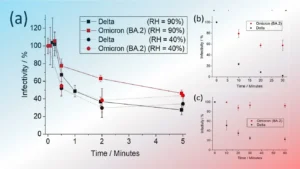What was the Human Genome Project?
The Human Genome Project was a large, well-organized, and highly collaborative international effort that generated the first sequence of the human genome and that of several additional well-studied organisms.
It was carried out from 1990–2003. The idea of the HGP was first publicly advocated by Renato Dulbecco in an article published in 1984, in which he argued that knowing the human genome sequence would facilitate an understanding of cancer.
Whose DNA was Sequenced?
The sequence of the human genome generated by the HGP reflects a patchwork from multiple people whose identities were intentionally made anonymous to protect their privacy.
The project researchers used a process to recruit volunteers, acquire their informed consent, and collect their blood samples.
Who carried out the Human Genome Project?
HGP has been completed with the participation of an international consortium of thousands of researchers.
In the United States, the researchers were funded by the Department of Energy and the National Institutes of Health, which created the Office for Human Genome Research in 1988 (Renamed the National Human Genome Research Institute in 1997).
The sequencing of the human genome involved researchers from 20 separate universities and research centers across the United States, United Kingdom, France, Germany, Japan and China.
The groups in these countries became known as the International Human Genome Sequencing Consortium.
Significance of Human Genome Project
- HGP has transformed biology through its integrated big science approach to deciphering a reference human genome sequence.
- It established an open approach to data sharing and open-source software, thereby making the data resulting from the project accessible to all.
- The genome sequences of microbes, plants and animals have revolutionized many fields of science, including microbiology, virology, infectious disease and plant biology.
- Moreover, deeper knowledge of human sequence variation has begun to alter the practice of medicine.
- HGP has inspired subsequent large-scale data acquisition initiatives such as the International HapMap Project, 1000 Genomes, and The Cancer Genome Atlas, as well as the Human Brain Project and the emerging Human Proteome Project.
Genome India Project
Taking inspiration from the Human Genome Project, the Department of Biotechnology (DBT) initiated the “Genome India Project” (GIP) on 3rd January 2020.
Aim
- The GIP aims to collect 10,000 genetic samples from citizens across India, to build a reference genome.
- This project is led by the Centre for Brain Research at Bengaluru-based Indian Institute of Science, which acts as the central coordinator between a collaboration of 20 leading institutions.
Method
- For conducting the project, investigators in hospitals will lead the data collection through a simple blood test from participants and the information will be added to biobanks.
- Some of the priority areas are Precision health, Rare genetic disorders, Mutation spectrum of genetic and complex diseases in the Indian population, Genetic Epidemiology of Multifactorial Lifestyle Diseases, and Translational Research.
Significance
- This initiative reflects India’s progress in gene therapies and precision medicine, and its movement towards emerging next-generation medicine which yields the possibilities for greater customization, safety, and earlier detection.
- The initiative would help lay the foundation of personalized healthcare for a very large group of persons on the planet.
Also Read
What is Recombinant DNA Technology ? Applications of rDNA Technology
What is Transgenic Bacteria and its applications?
Applications of Nanomaterials in Medical and Healthcare industries












1 thought on “Human Genome Project (HGP) and its Significance”